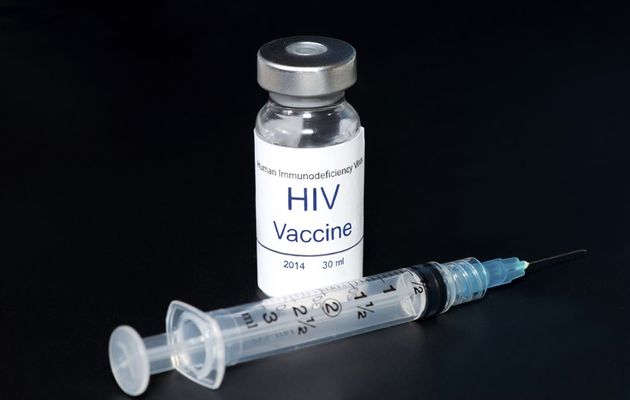
Despite efforts by the National Agency for the Control of AIDS (NACA) to end Human Immuno-deficiency Virus (HIV)/Acquired Immune Deficiency Syndrome (AIDS) before 2030, no fewer than 560,000 persons living with the virus are not on treatment. This comes as Nigeria joins the rest of the international commuity to mark the World’s AIDS Day (WAD).
Latest figures from NACA showed that, of the estimated 1.8 million Nigerians living with HIV, only 1.24 million are currently on treatment. According to NACA’s 2020 Quarterly FACTSHEET VOL 1, 13 of every 1000 persons are likely to test positive for HIV.
The report noted that Nigeria needs to invest $2.4 billion to identify and treat additional 540,000 Persons Living With HIV (PLWH) to reach the Joint United Nations Programme on AIDS (UNAIDS) target for epidemic control in the next three years.
According to the report, the estimated number of tests needed to identify these additional persons with HIV is 50 million persons.
The implication that 560,000 persons with HIV in Nigeria are not on treatment is dire. According to the World Health Organisation (WHO), there were an estimated 38 million people living with HIV at the end of 2019 and due to gaps in HIV services, 690,000 people died from HIV-related causes in 2019 and 1.7 million people were newly infected.
The report noted that COVID-19 has affected provision of HIV services and caused 45.5 per cent drop in viral load testing, clinical activities and in Anti Retroviral (ARV) drug refill rate.
It also noted that six months interruption in HIV treatment due to lockdown might lead to 900,000 deaths as opposed to 430,000 deaths in Sub Saharan Africa.
The NACA report also showed that Akwa Ibom has the highest burden of HIV/AIDS in Nigeria. It is followed by: Benue, Taraba, Anambra, Abia, Cross River, Edo, Enugu, Nasarawa, Rivers, Bayelsa, Delta, Imo, Plateau, Federal Capital Territory (FCT) Abuja, Ogun, Lagos, Gombe, Adamawa, Borno, Kaduna .
Others include: Ondo, Osun, Oyo, Ebonyi, Kogi, Kwara, Ekiti, Kebbi, Kano, Niger, Bauchi, Sokoto, Yobe, Zamfara, Jigawa and Katsina with the lowest burden and least affected.
Among adults age 15-64 years, HIV prevalence varied by zone across Nigeria, with the highest prevalence in South South Zone (3.1 per cent) and the lowest prevalence in North West Zone (0.6 per cent).
Also, latest figures from UNAIDS showed more than 12 million people are still waiting to get on HIV because they could not access essential services.
On his message to Nigerians on WAD, Director General, NACA, Dr. Gambo Gumel Aliyu, told The Guardian: “We have 1,240,000 that are now on treatment.
“…My message is help us contribute to controlling HIV/AIDS in Nigeria by testing yourself to know your HIV status today. If your status is positive, call us or meet our health workers anywhere in the country to make sure they help control this virus in you and to make sure this virus does not leave you. We have been doing that and will continue to do that. If your status is negative you can still call us at 6222 to learn how you remain negative for the rest of your life and this is our responsibility to make this information available.
“Please do not disenfranchise yourself from the services that are free and that are there waiting for you, take advantage of it. Know your status, if you are negative learn how to remain negative for the rest of your life. If you are positive, it is not an end to this road, it is the beginning of a journey to healthy living with HIV.”
Regarding the impact of COVID-19 on efforts to end AIDS in Nigeria, Aliyu said: “Particularly, the lockdown period has impacted in such a way that it has denied us the opportunity to identify newly infected people in terms of every month, every year, we go after the remaining people that are unidentified. We identify them and bring them for treatment that is the only way you have to control HIV and end AIDS. So, our numbers reduced in the month of April and May this year simply because of the lockdown. Apart from that, it has also competed with HIV in certain things simply because, when it came first, most of the laboratory infrastructure that do the testing for COVID19 are HIV laboratories and even now they still provide those services. So, we run HIV during the day, at night we ran COVID-19. It was not easy for our staff nationwide.”
Executive Director, UNAIDS, Winnie Byanyima, in her WAD 2020 message said: “World AIDS Day 2020 will be like no other. COVID-19 is threatening the progress that the world has made in health and development over the past 20 years, including the gains we have made against HIV.
“Like all epidemics, it is widening the inequalities that already existed. Gender inequality, racial inequality, social and economic inequalities. We are becoming a more unequal world.”
MEANWHILE, at the United Nations High-Level Meeting on Ending AIDS in 2016, countries pledged to increase the number of people living with HIV on treatment to 30 million by the end of 2020.
Treatment scale-up has been impressive, with more than twice the number of people on treatment than in 2010, but as of June 2020 there were only 26 million people on HIV treatment, four million short of the target for the end of 2020.
The global AIDS response was off track before the COVID-19 pandemic hit, but the rapid spread of the coronavirus has created additional setbacks. Modelling of the pandemic’s long-term impact on the HIV response shows that there could be an estimated 123,000 to 293,000 additional new HIV infections and 69,000 to 148 000 additional AIDS-related deaths between 2020 and 2022.
END

Be the first to comment